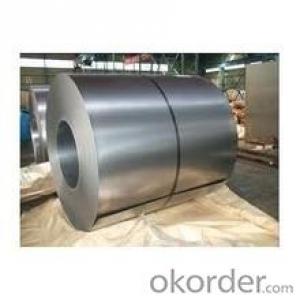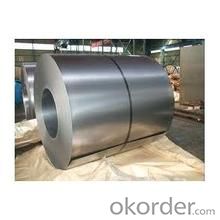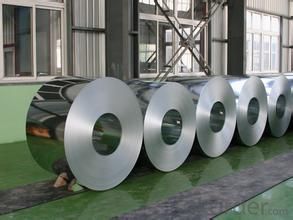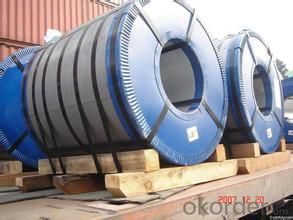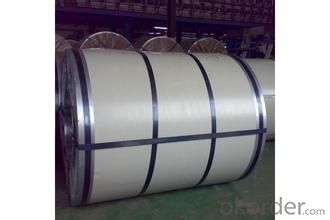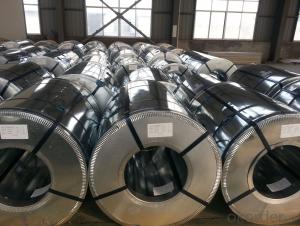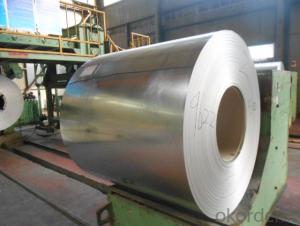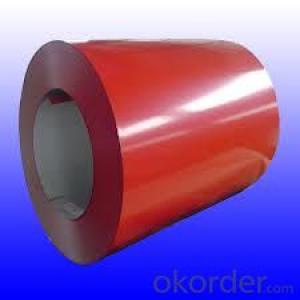hot-dip galvanized/ aluzinc steel in China
- Loading Port:
- Tianjin
- Payment Terms:
- TT OR LC
- Min Order Qty:
- 20 m.t.
- Supply Capability:
- 5000000 m.t./month
OKorder Service Pledge
OKorder Financial Service
You Might Also Like
Description:
Hot-dip galvanized steel coils are available with a pure zinc coating through the hot-dip galvanizing process. It offers the economy, strength and formability of steel combined with the corrosion resistance of zinc. The hot-dip process is the process by which steel gets coated in layers of zinc to protect against rust. It is especially useful for countless outdoor and industrial applications.
Standard: | AISI,ASTM,BS,DIN,GB,JIS | Grade: | SGCC,DX51D/DX52D/S250,280GD | Thickness: | 0.12-4.0 mm |
Place of Origin: | Brand Name: | N/M | Model Number: | ssp-226 | |
Type: | Steel Coil | Technique: | Cold Rolled | Surface Treatment: | galvanized/ Galvalume/zinc coatting |
Application: | strong anti-corrosion ability,cold bending molded manufacturablity | Special Use: | High-strength Steel Plate | Width: | 600-1250 mm |
Length: | in coil | product: | g40 prime/secordary hot-dip galvanized cold rolled steel coil/sheet |
|
|
Packaging & Delivery |
|
|
|
|
|
Packaging Detail: | standard export package,Other types of packing can be customized as per client's requirement. | ||||
Delivery Detail: | as per client's requirements | ||||
Service:
1,on time delivery
2,high quality with competitive price
3,good service
4,long-term cooperation
5, rely on honors
- Q: What is the process of slitting steel coils into narrower strips?
- The process of slitting steel coils into narrower strips involves unwinding the steel coil, passing it through a set of rotating circular blades called slitters, and then rewinding the resulting narrower strips onto separate spools.
- Q: Should I stick with the all steel kit over the acrylic tapers and steel plugs? or would the acrylic be ok? I keep hearing that steel is the best and acrylic can cause problems. I just want to do it correctly and take my time with it, no rushing.thanks
- It depends on your body and what you prefer. If you body is allergic to one of them you would have to chose for another one. If it's not allergic to any, than you can use whatever you like the most, just try both.
- Q: Like 49ers. Pittsburgh have long history of steel industry?
- Yes. US Steel used to be in Pittsburgh, before Reagan let them move and destroyed Pittsburgh. Pittsburgh also used to have more than 1 million residents (in the early 80s) but now has less than 300K. The Pittsburgh Steelers symbol is the US Steel symbol, colored in.
- Q: What are the different methods of cutting edge trimming for steel coils?
- There are several methods of cutting edge trimming for steel coils, including shearing, slitting, laser cutting, and plasma cutting. Shearing involves using a sharp blade to cut through the coil's edge, while slitting involves using multiple circular blades to make longitudinal cuts. Laser cutting uses a high-powered laser beam to melt and vaporize the material, producing a precise and clean cut. Plasma cutting involves using a high-temperature plasma arc to melt and cut through the steel. Each method has its advantages and is chosen based on factors such as the required precision, speed, and cost-effectiveness.
- Q: Already on my team is Empoleon lvl 82Heatran lvl 74Scizor lvl 34Magnezone lvl 38What other steel types should I choose?
- Some other good Steel types to consider are: Steelix, Metagross, Lucario, and Excadrill. If you aren't against using legendaries, Genesect, Diagla, and Jirachi are good choices too. I would recommend Skarmory, but Skarmory is better to use in a competitve battle setting, and not a regular in-game setting (which is what I assume you're doing). The other Steel types you've chosen are very good.
- Q: Does the solution change, or does only the steel wool change color?
- Steel is an iron alloy, and iron is more reactive than copper, so what you'd see is the blue colour of the solution becoming lighter, and a black precipitate appearing on the steel wool.
- Q: What material is strongest? Human bone, steel, or concrete?
- Steel is used to shape and reinforce concrete. Steel is also used in cutting bones in surgery and repairing bone through use of steel pins and braces. So, the answer is most definitely steel. In answer to your watch question, the volume of concrete was greater than that of your watch. The question of large volume vs. small volume is an easy one. Ten tons of human bone would easily reduce a 1 lb block of concrete to powder. Likewise, ten tons of concrete would snap a steel bar like a toothpick. Your watch had much less volume than the concrete you dropped it on. Furthermore, with enough force, your watch would have made a hole in the concrete, but its acceleration was not enough to counter the impacting force of the solid concrete reinforced by the soil and clay below it.
- Q: Can steel coils be used in marine environments?
- Yes, steel coils can be used in marine environments, but proper precautions need to be taken to prevent corrosion. Steel is prone to corrosion when exposed to moisture and saltwater, which are common in marine environments. To counteract this, the steel coils can be treated with protective coatings, such as galvanization or painting, to create a barrier between the steel and the corrosive elements. Additionally, regular maintenance and inspections should be performed to identify any signs of corrosion and take appropriate action to prevent further damage. By implementing these measures, steel coils can be effectively used in marine environments while minimizing the risk of corrosion and ensuring their durability and performance.
- Q: I have a steel string, Yamaha acoustic guitar that I am learning to play at home. But at school I use a rented nylon string guitar. I like the feel of the nylon strings better then the steel strings and i was wondering if i can just switch strings or if i should just get another guitar. Can anyone help?
- No, okorder /... You will want a full size or possibly a 3/4 size guitar. A 3/4 size guitar is a little smaller and will be closer in neck width to a steel string guitar. I used one like that when I started out playing when I was young. Avoid the cheap ones on Amazon that only cost $30-$50.
- Q: What are the different types of steel coil packaging methods?
- There are several different types of steel coil packaging methods, including but not limited to: strapping, wrapping, banding, shrink-wrapping, palletizing, and using steel coil covers or caps. Each method serves a specific purpose and provides varying levels of protection and stability during transportation and storage.
Send your message to us
hot-dip galvanized/ aluzinc steel in China
- Loading Port:
- Tianjin
- Payment Terms:
- TT OR LC
- Min Order Qty:
- 20 m.t.
- Supply Capability:
- 5000000 m.t./month
OKorder Service Pledge
OKorder Financial Service
Similar products
Hot products
Hot Searches
Related keywords
